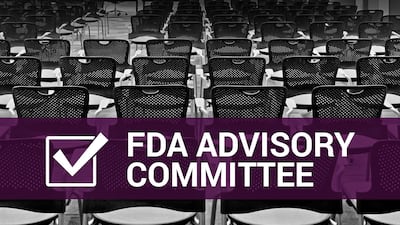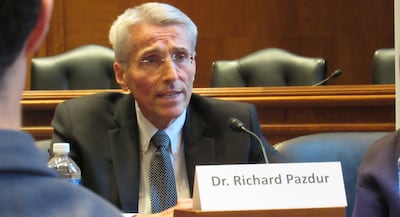Approval Standards
CBER will strive to respond to post-meeting clarification requests within three business days rather than the usual 20 calendar days, according to an updated policy reflecting the expansion of a pilot program that began in the drugs center.
The CDER Office of Generic Drugs published a MaPP for prescription-to-nonprescription switches to explain the regulatory responsibilities of generic sponsors.
Experts said the impact of the planned approval standard changes are difficult to assess given the potential for flexibility outlined in the JAMA article, as the FDA again eschews guidance and public comment in making new policy.
After voting to change the recommendation for a hepatitis B vaccine birth dose, the CDC Advisory Committee On Immunization Practices laid the groundwork for for changes to adjuvant policy.
The tilt toward approval extended beyond patients and advocates to clinicians, professional societies and industry.
The FDA proposed conditions for eliminating six-month animal studies in mAb development and gave examples when shorter-duration studies could be eliminated.
The soon-to-be former CDER director will return to the oncology office to complete his FDA tenure, the agency said.
Non-malignant hematology, respiratory and cardiometabolic candidates make up for an unusual lack of oncology products on the US FDA’s December user fee goal calendar.
The Pink Sheet's list of EU centralized approvals of new active substances has been updated to include two new products, one of which is Lynkuet, Bayer's treatment for moderate to severe vasomotor symptoms associated with menopause or endocrine therapy for breast cancer.
Flu vaccines are specifically mentioned in the CBER director's internal email, but all new and some older vaccines seem to be affected. The impact on development programs is unclear.
India is advancing regulatory rationalization efforts, refining procedures and pathways. Guidelines for biosimilars are expected to align with international standards, while early steps towards PIC/S compliance have been initiated.
England is set to become the first market outside of the US where Autolus’ CAR-T therapy Aucatzyl is reimbursed for acute lymphoblastic leukemia, after the country’s health technology assessment institution, NICE, recommended its use for certain patients.
The US FDA’s Oncology Center of Excellence is eager to work with osteosarcoma researchers to advance trials for the difficult to study cancer – but OCE officials made clear that they are not likely to use mandatory pediatric study authorities to force the issue.
The orphan drug share of US FDA’s 2025 novel approvals is holding steady, with examples of approvals based on a single trial with confirmatory evidence from UCB, Precigen, Jazz Pharmaceuticals and Stealth Biotherapeutics
The UK’s early access to medicines scheme could be due a rethink, a senior figure from the Medicines and Healthcare products Regulatory Agency has suggested, after feedback indicated “discontent” with how the program functions.
After two deaths tied to the gene therapy, Sarepta and the FDA agreed to new labeling for Elevidys, adding a black box warning about liver injury along with suggested liver and cardiac monitoring.
Five of the six winners of the US FDA’s second batch of Commissioner’s National Priority Vouchers are for secondary indications. That is no accident, Commissioner Makary says.
From how he will interact with industry to his staff, to a possible advisory committee revival and dangling accelerated approval crackdowns, Pink Sheet looks at how Rick Pazdur's oncology track record could translate to CDER.
Manufacturers who succeed in treating several patients with bespoke therapies could leverage platform data to gain marketing approval for similar products in additional conditions, FDA leaders say in a NEJM article that describes five prerequisites for use of the new pathway.
In this exclusive article with Peter Crowley, Secretary and Scientific Director of the BP Commission, you’ll discover how the BP is preparing for its landmark 2026 edition while strengthening its influence as a global bridge between science, regulation, and industry.




















